Ruminant animals produce significant amounts of methane (CH4). Methane is a potent greenhouse gas (GHG), 28 times more destructive than CO2.
Researchers at Bantry Marine Research Station® (BMRS) are developing methodologies for the cultivation of the red seaweed Asparagopsis armata. This is a pioneering research field. A. armata is a proven powerful anti-methanogen when fed to ruminant animals as a dietary supplement.1,2 Given as a feed supplement, it is better than any other option currently being investigated.
The objective of this research is to develop, refine and optimise the cultivation and harvesting techniques to grow and supply the seaweed so that it can play a significant role in reducing Ireland’s agriculture GHG emissions.
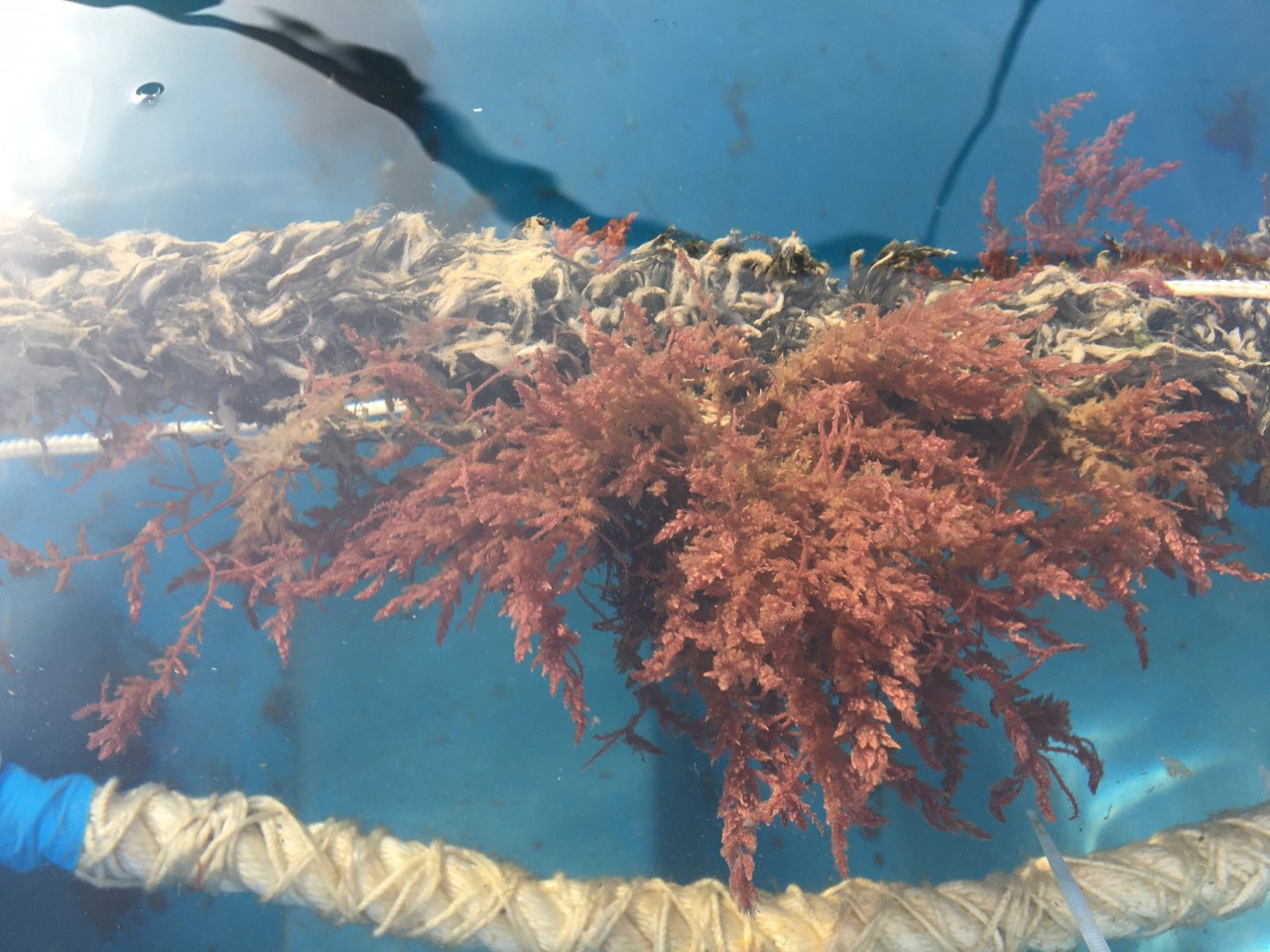 Photo: Adult plant growing in land-based tanks at BMRS
Photo: Adult plant growing in land-based tanks at BMRS
1. Mitigating the carbon footprint and improving productivity of ruminant livestock agriculture using a red seaweed. Robert D. Kinley et al. Journal of Cleaner Production 259(2020)
2. Inclusion of Asparagopsis armata in lactating dairy cows’ diet reduces enteric methane emission by over 50 percent. Journal of Cleaner Production Volume 234, 10 October 2019, Pages 132-138
Milestones Achieved by BMRS
- Asparagopsis armata has a life cycle characterized by a gametophytic and a sporophytic life stage. The induction of sporogenesis in laboratory conditions is a fundamental step to enable a mass production of the seaweed. BMRS has achieved sporogenesis induction and it is currently scaling up the system in order to produce large quantities of spores, which will enable seaweed producers to grow the seaweed.
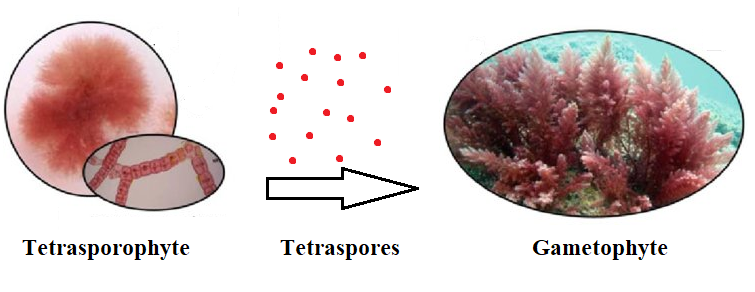
- BMRS has also developed methodologies for the cultivation, both nearshore and land-based, of the two life stages of this seaweed.
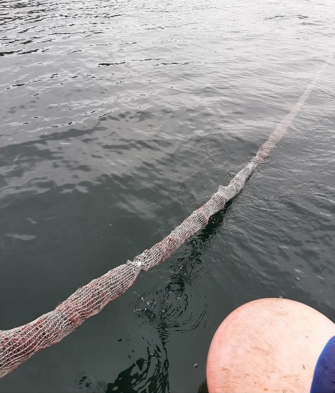
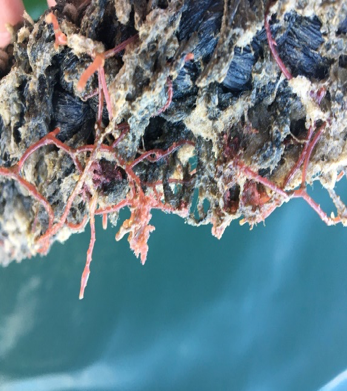
- BMRS has years of experience in seaweed farming and it has established a hatchery for the cultivation of several species of kelp found in the North Atlantic.
- BMRS has also developed analytical methods to characterise the chemical profiles of the seaweeds and methodologies for the extraction of interesting bio-compounds.
Future Goals
- Establish a hatchery for the cultivation of A. armata
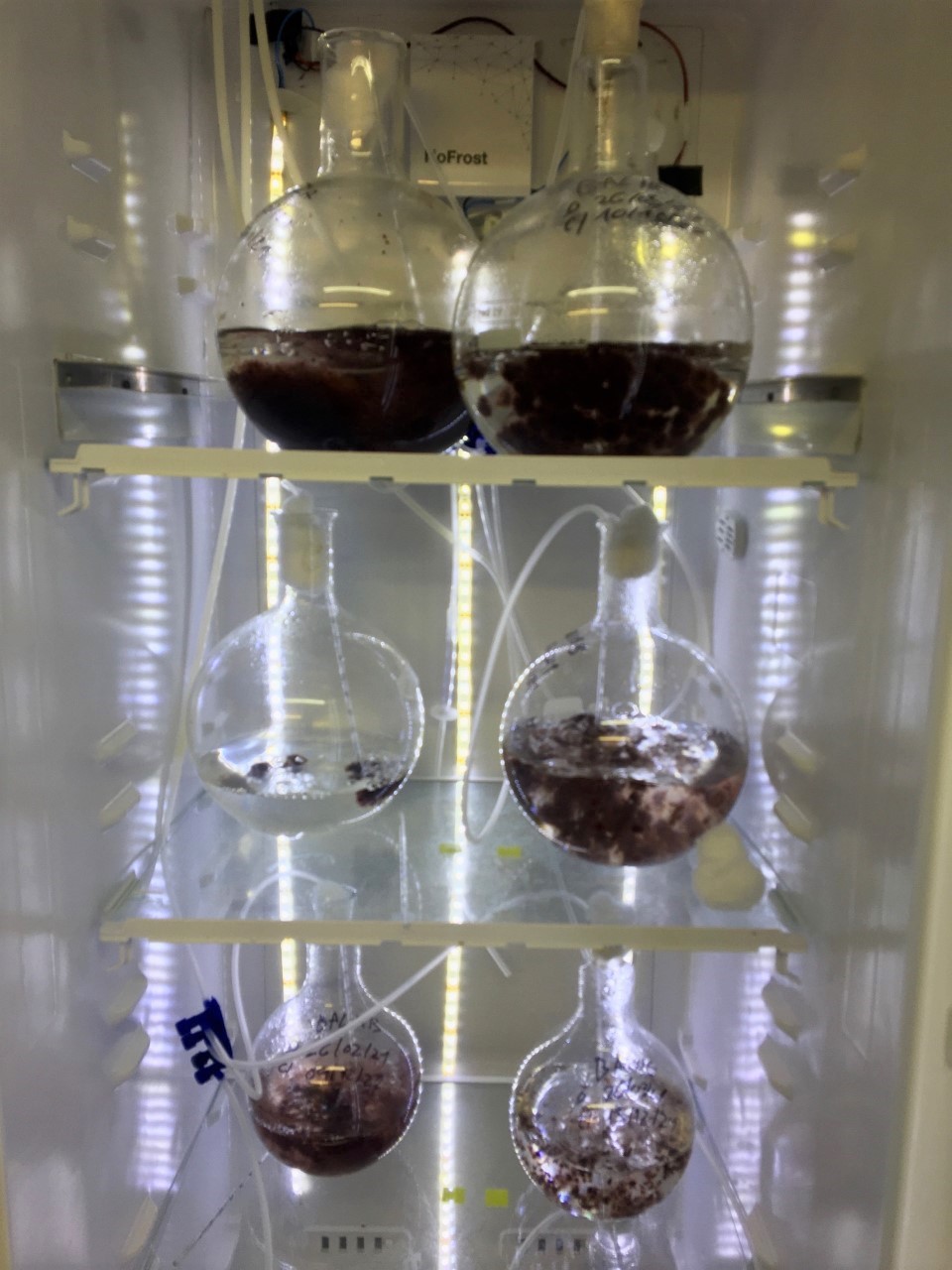
- Evolution of the methodology for the development of the spores on ropes for deployment nearshore.
- Evaluation of the benefits of seaweed cultivation in term of marine ecosystem and carbon sequestration.
- Identification of marine sites for nearshore cultivation with characteristics that optimise productivity.
- BMRS will support Teagasc in feed trials to test the effect of A. armata on ruminants and their emissions.









